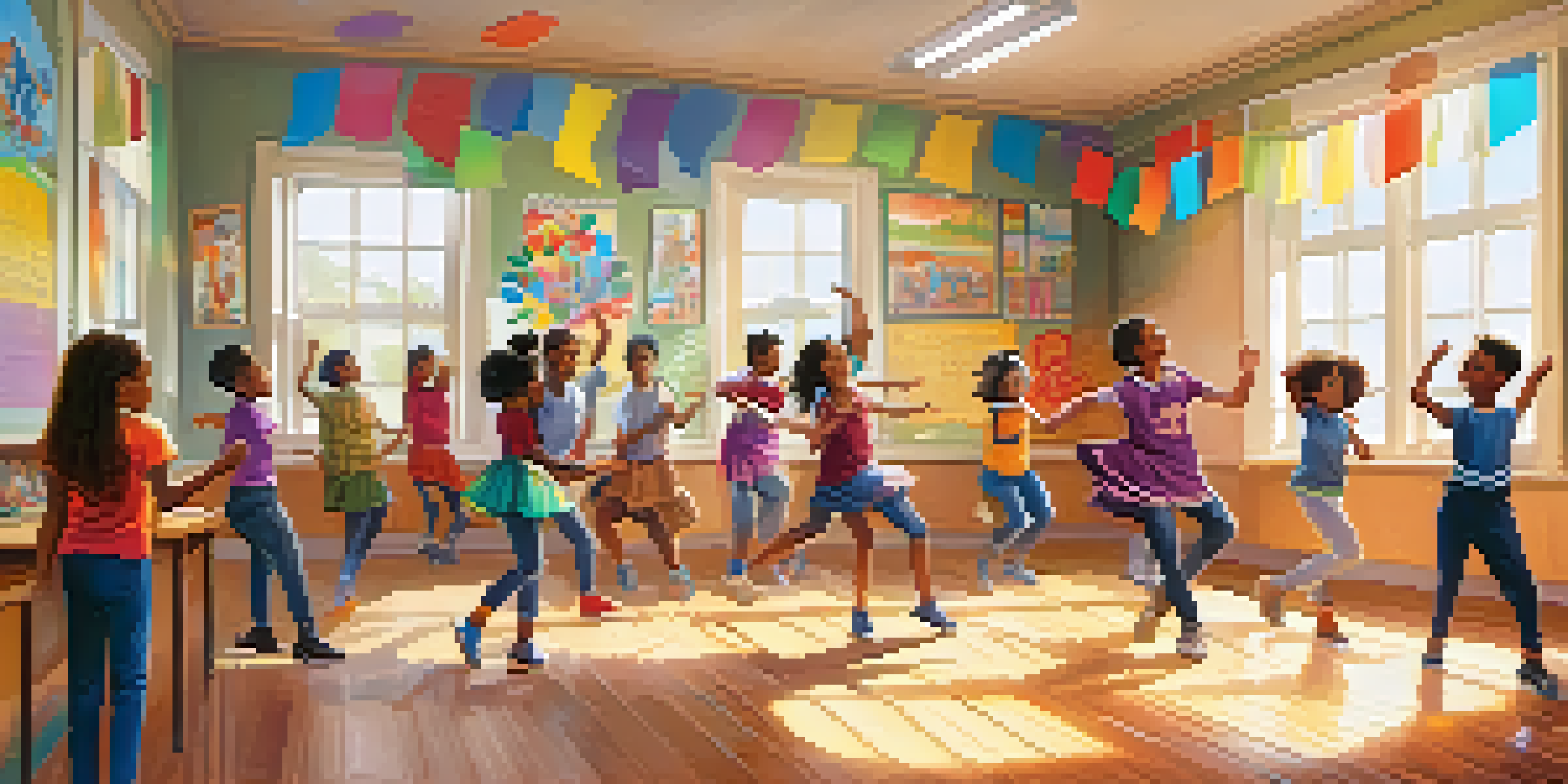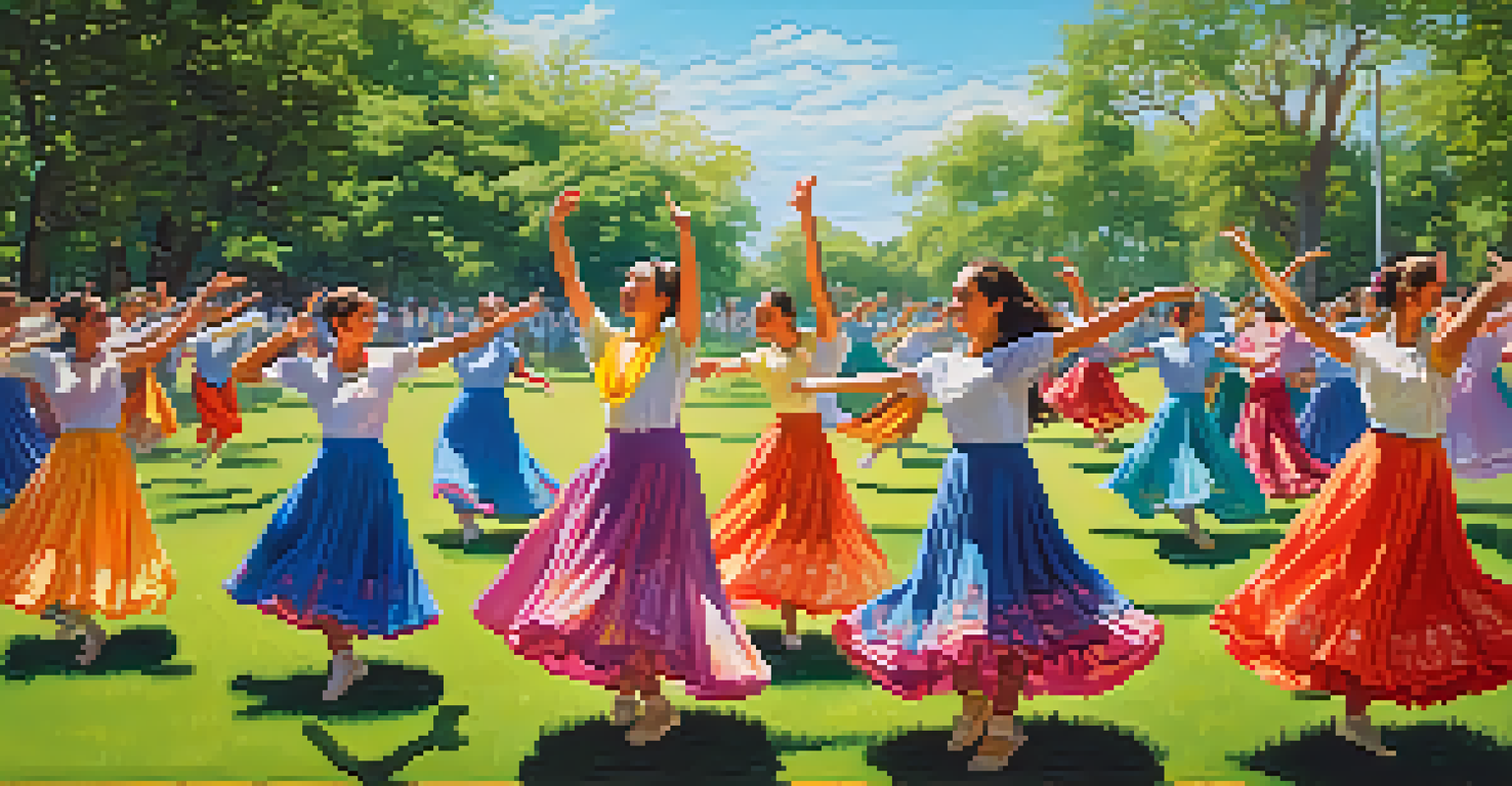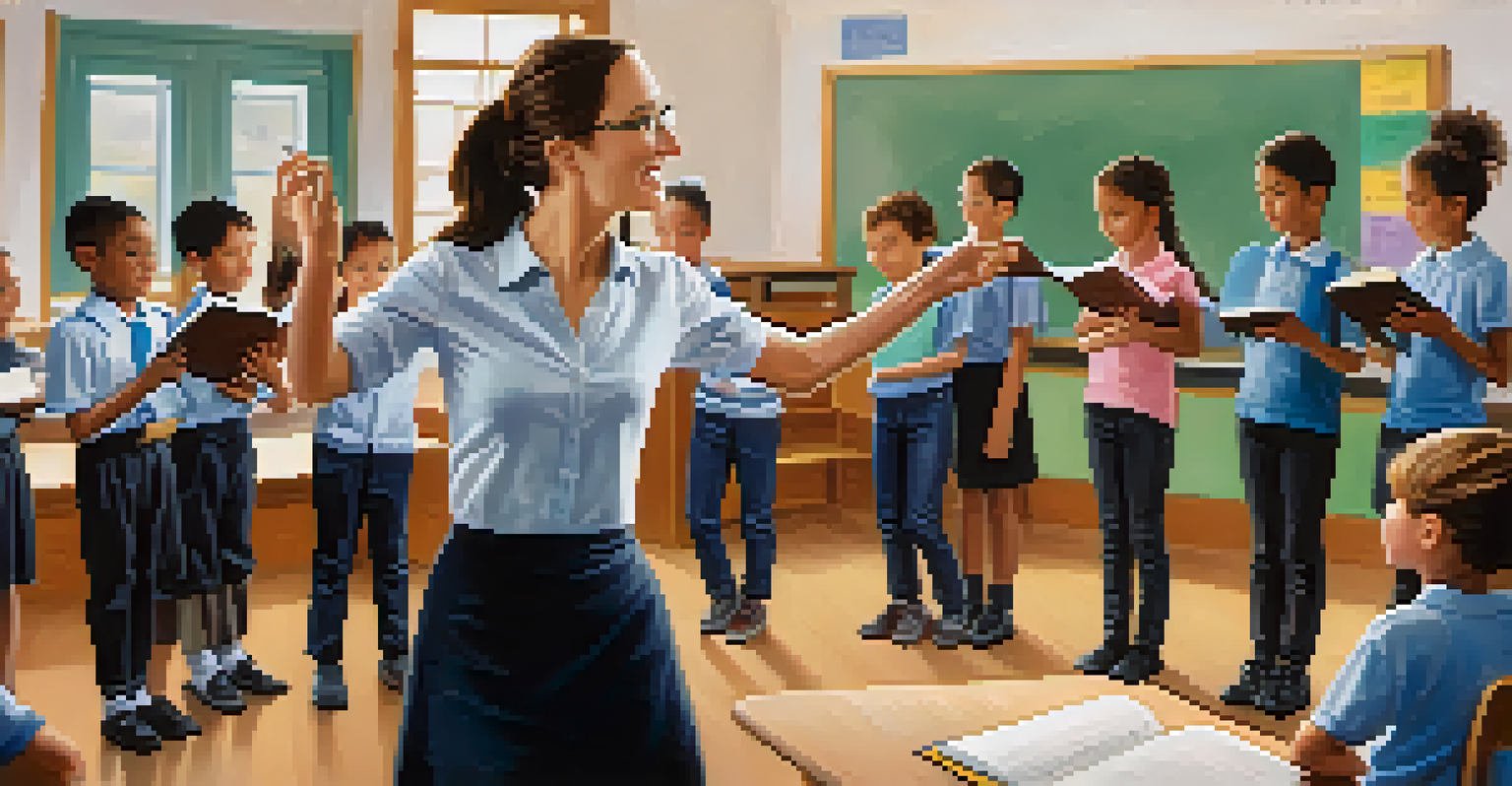Dance as a Tool for Improving Memory in Educational Settings

The Connection Between Dance and Brain Function
Dance is not just an art form; it also engages various parts of the brain, enhancing cognitive functions. When students dance, they activate areas responsible for memory, coordination, and emotional regulation. This multi-faceted engagement can lead to improved retention of information and skills.
Dance is the hidden language of the soul.
The rhythmic movements and patterns involved in dance require mental processing, which can stimulate neural pathways. This stimulation helps strengthen connections between neurons, making it easier to recall information later. In essence, dance can serve as a workout for the brain, much like physical exercise does for the body.
Moreover, incorporating dance into learning environments can create a more dynamic atmosphere. This lively approach not only makes learning enjoyable but also helps students absorb and retain information more effectively.
How Dance Promotes Memory Retention
Studies have shown that physical activity, including dance, can enhance memory retention. When students learn through movement, they often create mental associations that make recalling information easier. For instance, a dance routine can embody a historical event or scientific concept, anchoring it in the learner's mind.

The combination of music and movement in dance can further aid memory. Music has been linked to improved recall, and when paired with physical actions, it can create a powerful mnemonic device. This means that students might remember facts or concepts better when they've associated them with a dance.
Dance Enhances Cognitive Functions
Engaging in dance activates brain areas related to memory, coordination, and emotional regulation, leading to improved learning outcomes.
In classrooms where dance is integrated into lessons, students often demonstrate higher engagement levels. This engagement translates into a greater willingness to learn and, consequently, better memory retention.
The Role of Rhythm in Learning
Rhythm plays a critical role in both dance and memory. When students engage with rhythmic patterns, they can enhance their ability to memorize sequences and concepts. For instance, clapping in time to a rhythm can help solidify mathematical operations in a fun and interactive way.
Movement is a medicine for creating change in a person's physical, emotional, and mental states.
Moreover, rhythm can foster a sense of community among learners. When students dance together, they share a collective experience that strengthens social bonds. This connection can lead to improved collaborative learning, which is beneficial for memory retention.
Incorporating rhythmic elements into lessons can make them more memorable. Whether it's through dance or rhythmic chanting, the beat can help students internalize information more effectively.
Dance as a Stress Reliever for Better Learning
Stress can be a major barrier to effective learning and memory retention. Dance provides a fun and expressive outlet for students to release tension and anxiety. By reducing stress levels, students can create a more conducive environment for learning.
Engaging in dance allows students to focus on the present moment, which is essential for effective learning. This mindfulness aspect of dancing can help clear mental clutter, allowing for better concentration and retention. When students are relaxed and focused, their ability to remember information improves significantly.
Rhythm Aids Memory Retention
Incorporating rhythmic patterns in dance helps students create mental associations, making it easier to recall information.
Additionally, the joy that comes from dancing can lead to a more positive classroom atmosphere. This positivity can enhance motivation and engagement, further supporting memory improvement.
Integrating Dance into the Curriculum
To harness the memory-boosting benefits of dance, educators can integrate it into various subjects. For example, teachers can design dance routines that reflect historical events or scientific processes. This creative approach not only makes learning more interactive but also helps students remember key concepts.
Incorporating dance into the curriculum doesn't have to be complex. Simple movements that align with lessons can make a significant impact. Teachers can start by including brief dance breaks or rhythmic activities that reinforce what students are learning.
Ultimately, the goal is to create a learning environment where dance is an integral part of the educational experience. By doing so, educators can enhance memory retention while fostering a love for movement and creativity.
Case Studies: Success Stories in Dance Education
Many schools have already seen success in using dance as a learning tool. For example, a school district that implemented dance programs found notable improvements in student engagement and academic performance. Students reported feeling more motivated and excited about learning.
Another case study involves a program where students learned historical events through dance. Not only did this approach increase their understanding of the material, but it also helped them retain the information longer. By embodying the events, students created lasting memories.
Dance Reduces Stress for Learning
Dance serves as a fun outlet for stress relief, allowing students to focus better and enhance their memory retention.
These success stories highlight the potential of dance in educational settings. They demonstrate that when students can move and express themselves, they are more likely to remember what they've learned.
Conclusion: Embracing Dance for Enhanced Learning
In conclusion, incorporating dance into educational settings can significantly improve memory retention and learning outcomes. By engaging multiple areas of the brain and fostering a positive environment, dance becomes a powerful educational tool. It not only makes learning enjoyable but also helps students build lasting memories.
As educators, embracing creative methods like dance can transform traditional teaching approaches. This can lead to a more holistic educational experience that values both cognitive and emotional development.

Ultimately, the integration of dance into classrooms represents a shift towards more engaging, effective, and memorable learning experiences for students. It's time to put on those dancing shoes!